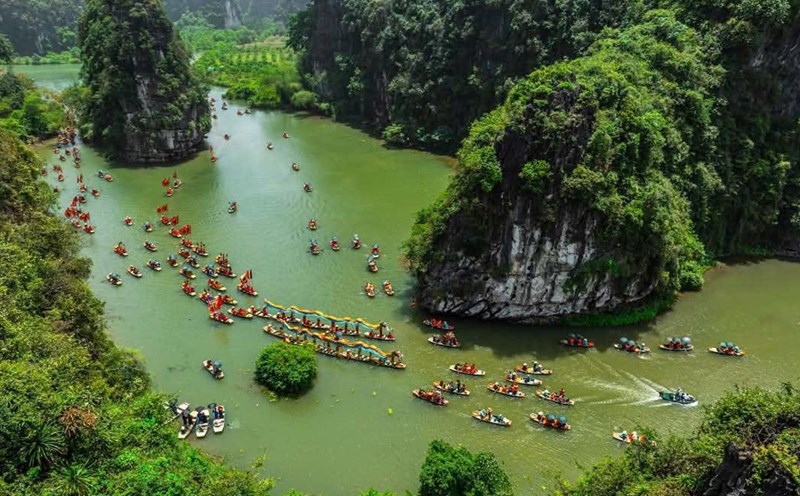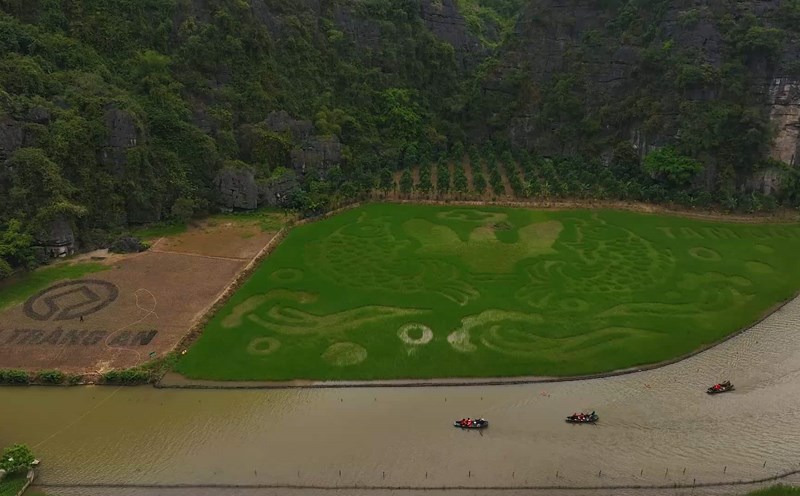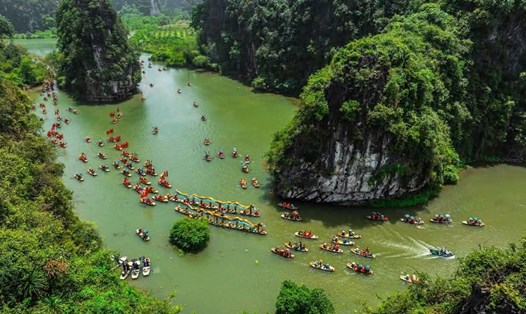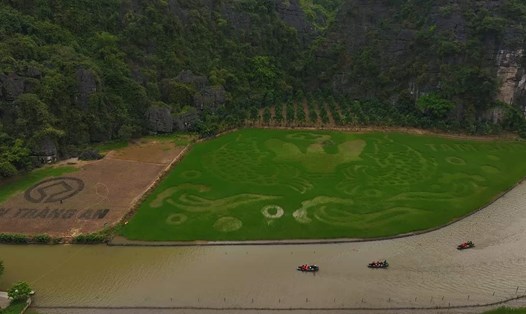During the recent long holiday, Mr. Hua Hong Quan (29 years old, Bac Giang) accepted friends' invitations to Ninh Binh to visit his home as well as travel. Before this invitation, the male tourist learned more about tourist attractions in addition to famous scenic spots such as Trang An, Tam Coc, Hang Mua... and was surprised to learn that Ninh Binh province owns a sea-crossing road.
This road and overpass project has a total length of more than 6km, invested in and built by the Ninh Binh Provincial Border Guard Command since 2017. The project was completed in 2020. This road connects from Binh Minh III dike to Con Noi, in Kim Son district, Ninh Binh province.
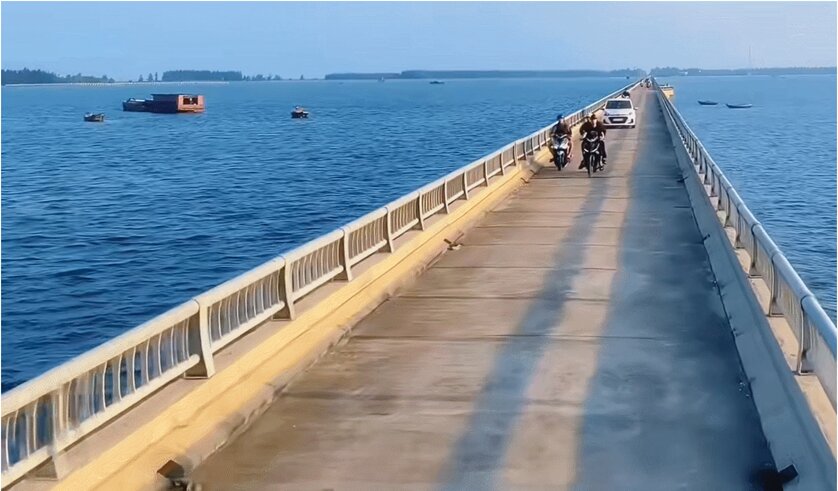
According to Mr. Quan, from the center of Ninh Binh city to Con Noi, you will have to drive a long distance, from 50 - 60 km. When reaching the starting point of the route, visitors will go through the national biosphere reserve forest, where the entrance is currently being expanded.
"When I arrived, the tide was high, many rows of trees were flooded. When I passed the forest canopy, the sunlight ran along the sea, more than a movie, I felt overwhelmed and worried before the sunset as if everything was golden in here," said the male tourist.
He suggested that the overpass section with a length of about 3km is a very beautiful check-in photo location, especially at the moment of sunset.

However, there is no fixed schedule for the bridge to open or close. On major holidays, the bridge will be opened so that people and tourists can go out to the islet to visit and experience.
Mr. Hong Quan shared: "Maybe this sea-crossing road is not well known to many people. I came here during the holidays, quite a few local people took my family and children to swim, but few visitors passed by, sometimes saw 4-5 cars and motorbikes with other provincial license plates stopping. At the end of the bridge, there is a fairly large parking lot".
The bridge across the sea in Ninh Binh is a lane enough for cars and motorbikes to go in parallel; In addition, there are bypasses on the bridge for cars and stop for motorbike riders to park again. At the time of the tide, the water receded, along the two sides of the bridge were mudflats, clam farming beaches with wealthy huts scattered along the coast.
Con Noi, the end point of the bridge, has been recognized by UNESCO as a World Biosphere Reserve, one of the most important biodiversity conservation areas in the Asia-Pacific region.
This is home to 200 species of birds, including more than 50 species of water birds and nearly 60 species of migratory birds; in particular, this is also home to the red-crowned crane named in the world red book. In addition, Con Noi also owns thousands of hectares of mangrove forests, coastal alluvial plains and river mouths.



